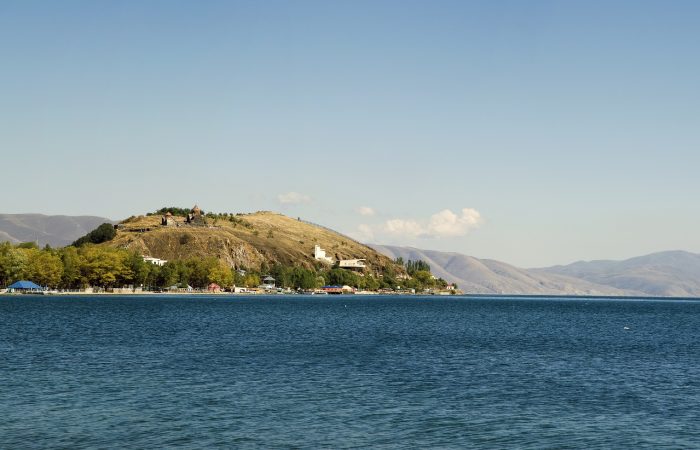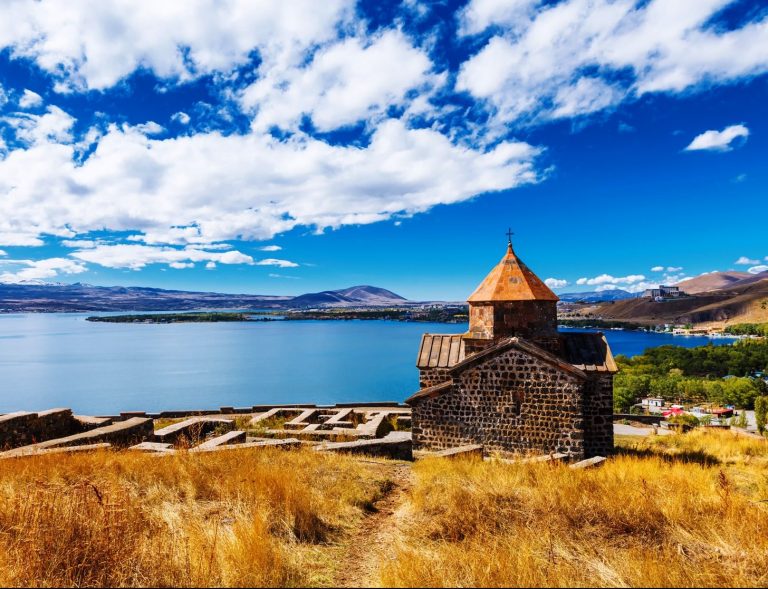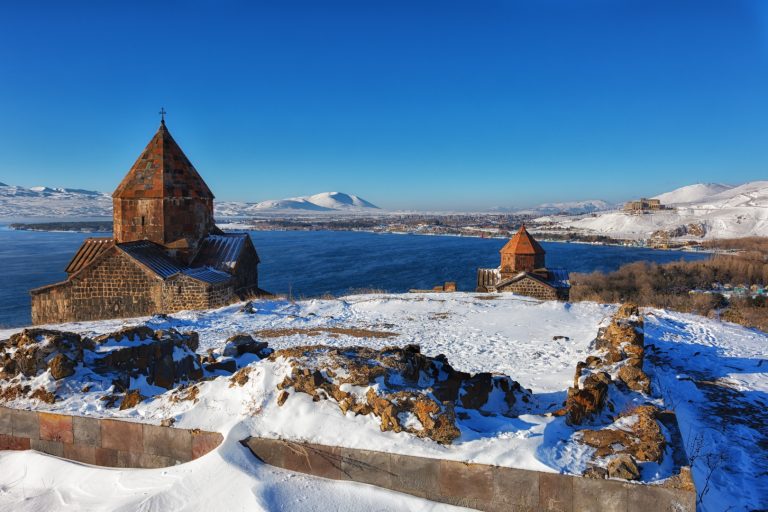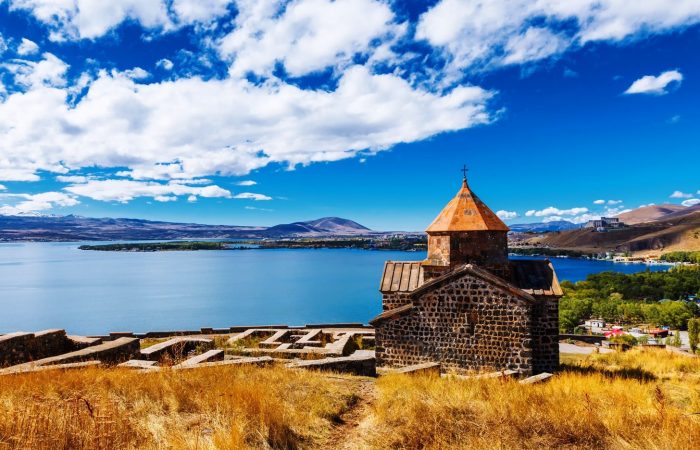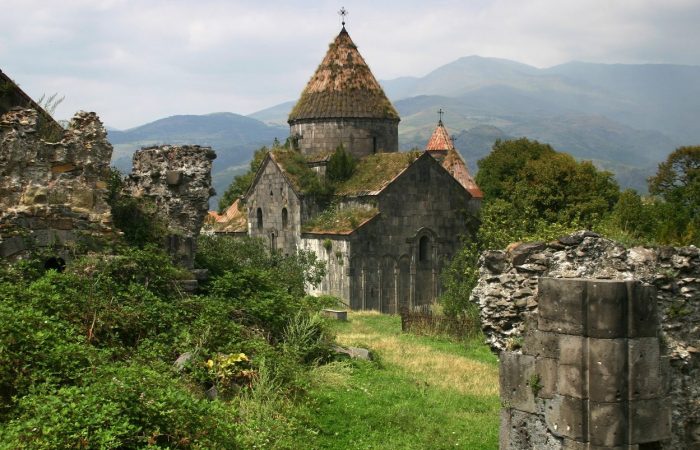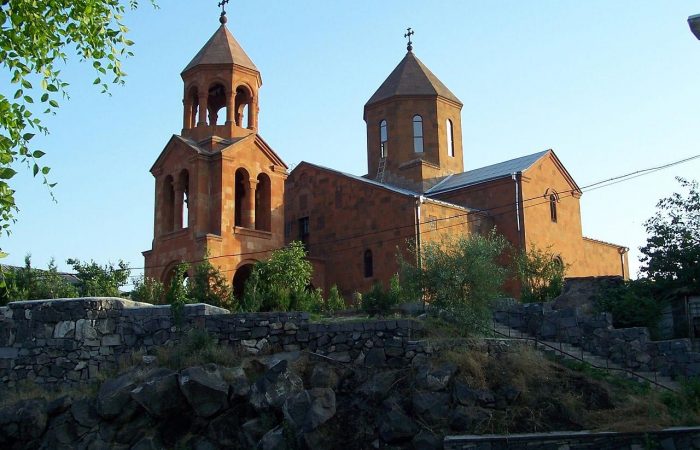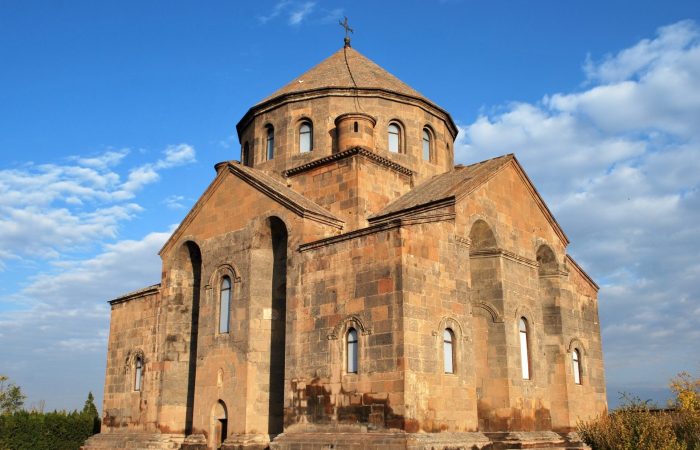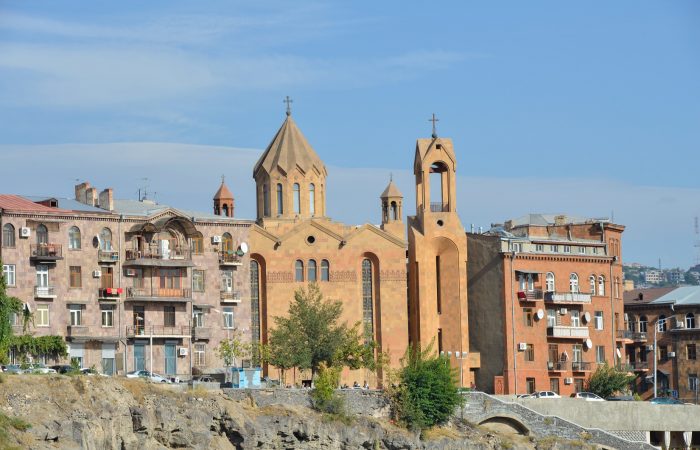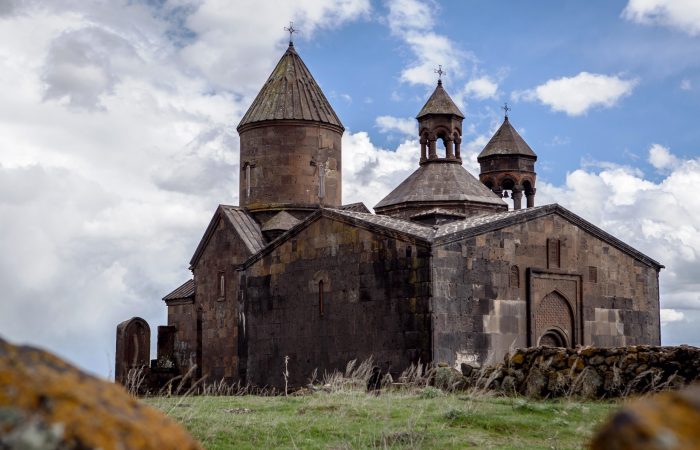Sevanavank Monestary
Sevanavank Monastery is located in Gegharkunik region, which is popular in Armenia due to its possession of the blue pearl of Armenians, Lake Sevan. There are two churches on the peninsula of Sevan. These two churches were built in 874 AD and together form the Sevanavank Monastery.
According to an inscription found in the territory, the monastery was built by Armenian princess Mariam, daughter of Ashot I, who later became the king of Armenia and the founder of Bagratuni dynasty. Sevanavank is one of the 30 churches that Princess Mariam vowed to build in the memory of her husband. King Ashot I, in his turn, presented six villages and gardens in the territory of today’s Garni and Yerevan to the monastery.
However, the peninsula was a religious center even centuries before the construction of Sevanavank Monastery churches. Surb Harutyun Church was built by Gregory the Illuminator, the founder of the Armenian Apostolic Church. It is said that the church was ruined during an earthquake in 995. Even before Armenia’s adoption of Christianity as a state religion there was a small pagan temple on the island of Sevan.
It’s one of the few monasteries in Armenia that work for religious purposes. There are benches in front of the churches, where tourists can enjoy a stunning scene to Big and Little Sevan. The area around the churches is the only place where you can sit on a bench and watch at the colors of the lake, which are changeable and depend on the weather and the time of the day.
It’s important to mention that there is a special dress-code. Although the monastery is situated very close to holiday resorts, it’s forbidden to enter the church dressed in swimsuit, very short skirt, and so on. Your legs and shoulders must be covered appropriately.

